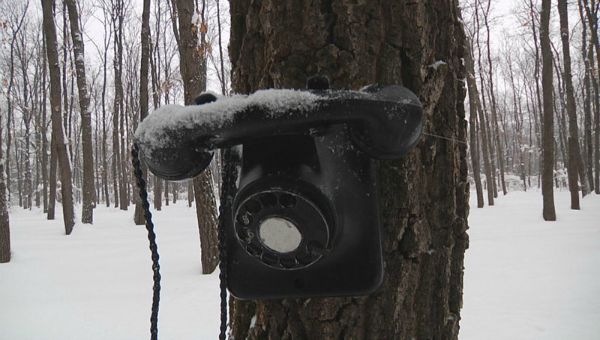
Sinisa Dragin’s THE FOREST is quite an experience. Told through the memoirs of an art critic, fictionalised phone calls and archive footage, Dragin tells the story of Romania and its relations with Yugoslavia after the end of World War 2.
Dragin packs a great deal of information into a brief run time of 73 minutes. These 5 or so decades of history are contextualised by the memoirs of Radu Bogdan, a man looking for The Leafless Forest. This painting was a gift from Romania to Yugoslavian president Josip Broz Tito. Soon the piece of art is lost, and Dragin chronicles Bogdan’s search through the second half of the 20th century.
While the film centred upon the search for the painting, this is often used a topic to allow the exploration of post war political strife in communist Europe. The death of Stalin, Romania’s relations with Yugoslavia and the rise and fall of Nicolae Ceaușescu and his brutal oppression, it’s all present and accounted for. When the revelation of The Leafless Forest is finally uncovered, it marks a stunning moment, in both the film and history. Everything shown until this moment can be considered a carefully constructed build up. Everything after is a climax as shocking as any fictional film could hope to achieve.
The way that real wartime footage of the Balkan war of 1991 is integrated into THE FOREST is nothing short of harrowing. A camera creeps through a war torn suburb, a car drives off with a mortally wounded passenger, and another vehicle is ablaze. Smoke fills the air. Matters only get worse from there. Bombing raids on cities at night, dead children, executions of soldiers and political leaders; Dragin doesn’t shy away from Eastern Europe’s horrific past. Yet despite the graphic nature of the film’s conclusion, its inclusion never comes off as crass or controversial. Instead it dramatizes everything that came before it, portraying that the smallest of actions can have the largest effects.
httpvh://youtu.be/fYLVWd1EGOY

